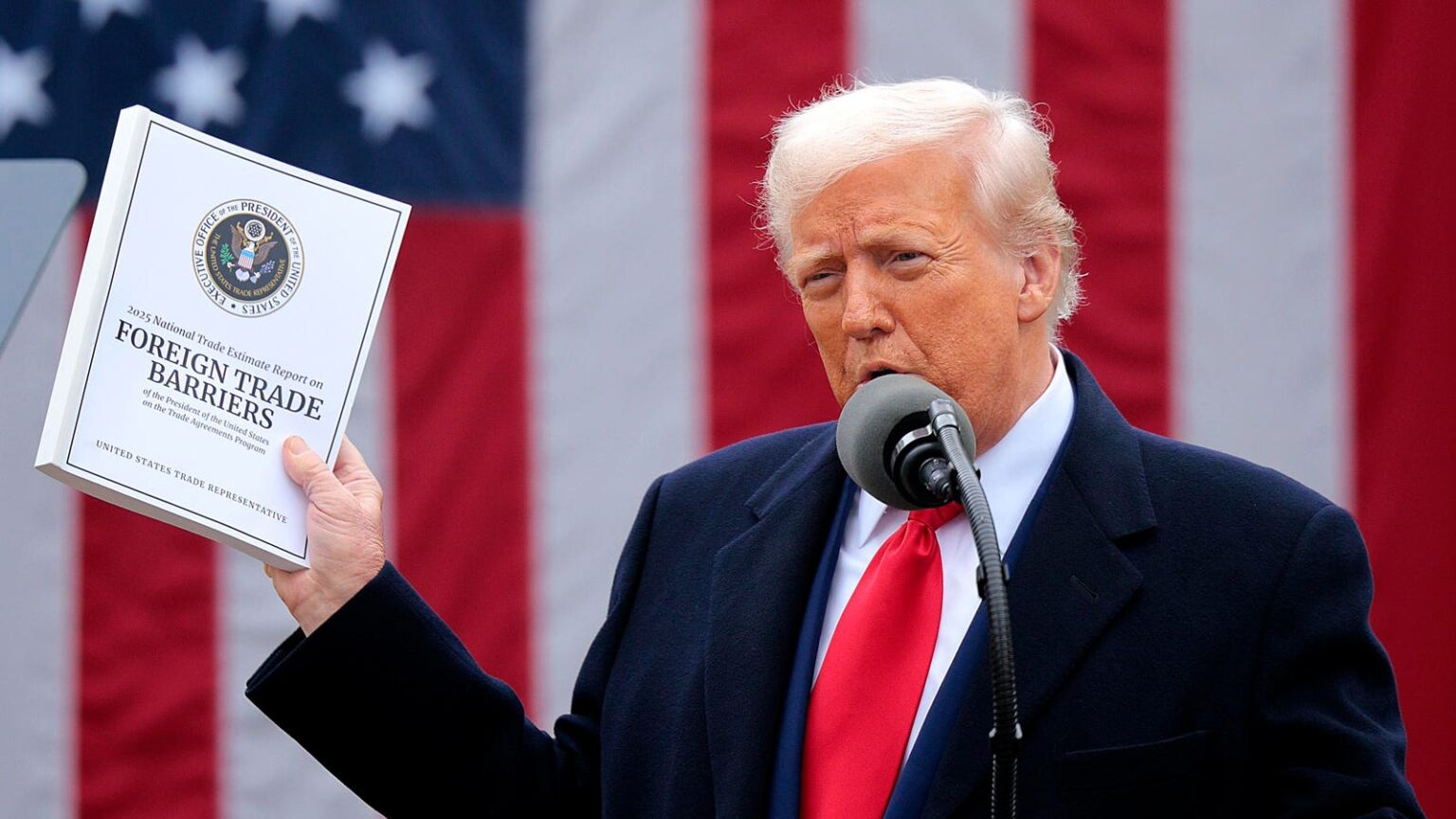Topline
President Donald Trump does not intend to lower his baseline 10% tariff on imported goods even after trade deals are reached with foreign governments, the White House said Friday, suggesting the president’s controversial tariffs will remain in place permanently even as his administration negotiates with countries around the world.
President Donald Trump announces his “Liberation Day” tariffs at the White House on April 2 in … More
Getty ImagesKey Facts
Trump is “determined” to keep the 10% baseline tariffs he’s imposed on foreign imports in place despite any trade negotiations, White House Press Secretary Karoline Leavitt told reporters Friday.
Trump is committed to the 10% rate “for his trade negotiations with all … countries,” Leavitt said, and—when asked if that meant the 10% rate would be permanent and remain even after all trade negotiations are done—responded, “The president is determined to continue with that 10% baseline tariff, I just spoke to him about it earlier.”
Leavitt’s comments came after the Trump administration announced its first trade deal Thursday, which was made with the United Kingdom and keeps the 10% tariff rate Trump previously levied on U.K. imports in place.
Commerce Secretary Howard Lutnick similarly told CNBC on Thursday the administration would not get rid of tariffs on countries’ imports entirely even after negotiations conclude, claiming the 10% rate would remain for countries that have a “balanced budget” in terms of their trade with the U.S.
Tariff rates could go above 10% for some countries even after trade deals are negotiated, Lutnick suggested Thursday, saying for countries that have trade deficits with the U.S., “The best they can do is 10%—most likely they’ll be higher.”
What To Watch For
The Trump administration is now trying to reach trade deals with dozens of foreign governments, after the president paused the brunt of his tariffs for 90 days in order to negotiate. The U.K. is so far the only country to announce an agreement with the U.S., though the deal is its still in preliminary stages and has not been fully completed. Trump has claimed there will be more deals coming shortly, writing on Truth Social on Friday, “Many Trade Deals in the hopper, all good (GREAT!) ones!” It’s still unclear which countries he could reach agreements with next and when any further announcements could come, with Trump’s 90-day pause set to expire July 8.
How High Will Trump’s Tariffs Be After Trade Negotiations?
It remains to be seen what Trump’s tariffs on foreign imports will look like at the end of the 90-day pause or after trade deals are reached. Trump’s initial “Liberation Day” tariff announcement levied different tariff rates on each country, which ranged between 10% and 50% and were calculated based on the U.S.’ trade imbalances with each country—a method that economists criticized as “incredibly stupid.” Foreign governments have sought to negotiate those rates lower, as the high tariff rates threaten the economies of manufacturing-heavy countries like Lesotho, Vietnam and Bangladesh. It’s still unclear by how much the Trump administration is willing to bring them down, however, and what other terms any trade deals the U.S. makes could include.
What About Tariffs On China?
While Trump broadly lowered his initial “Liberation Day” tariffs during the 90-day pause, he raised tariffs higher on China, resulting in tariffs of at least 145% on many Chinese imports. The Trump administration is set to hold its first trade negotiations with China this weekend in Switzerland, though it remains to be seen whether that will bring the tariff rates down and by how much. Trump floated lowering the tariff rate to 80% on Truth Social on Friday but suggested he’d leave it up to Treasury Secretary Scott Bessent to make the final call, writing, “80% Tariff on China seems right! Up to Scott B.”
Key Background
Trump has long made tariffs a key part of his policy agenda, despite warnings from economists that doing so could raise prices for American consumers and harm the economy. He announced his “Liberation Day” tariffs on April 2, expanding his tariff policy after initially only levying them on Canada, Mexico and China. The tariffs have roiled the global markets, with Trump’s “Liberation Day” announcement causing stocks to plummet before he announced the 90-day pause. Trump’s tariffs have remained controversial even after he froze most countries’ higher tariff rates, as the sky-high tariffs on Chinese goods have already started causing higher prices for consumer goods and sparked warnings of shortages. They’ve also led to a great deal of uncertainty in the economy, as it remains unclear how the president’s tariff policy will play out. The Federal Reserve warned Wednesday “the risks of higher unemployment and higher inflation have risen” and “uncertainty about the economic outlook has increased further” in light of Trump’s tariffs.
Further Reading
Read the full article here


